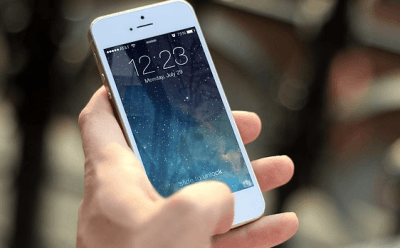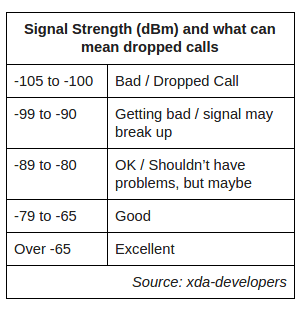Call drops have been plaguing Indian mobile subscribers, particularly the urban populace for nearly a year now. Call Drops has become a national topic, thanks to campaigns like #NoCallDrops from Network18. Since then various media houses have joined the debate and this has resulted in growing awareness about the subject. Thanks to the involvement of DoT, TRAI, PMO, and Telecom Ministry, Indian mobile subscribers will hopefully have a solution in the coming months.

TRAI's benchmark for call drops is <= 2% i.e., in 100 calls only two calls or lesser can drop. Unfortunately, this is not the case and lot of calls are dropped every day. Based on the information submitted by service providers to TRAI,
The investment made in the network infrastructure (other than radio spectrum) in wireless access service segment rose by 4.6% from Rs. 2,02,366 crore in F.Y. 2012-13 to Rs. 2,11,691 crore in F.Y. 2013-14. During this period, the minutes of usage grew by 6.8%. Clearly, investment has not kept pace with the usage.
Operators also have an unfair advantage with dropped calls from per-minute users as callers end up paying for an entire minute if a call drops in between, especially within the first few seconds. A TRAI Consultation paper (which is open for comments), proposes compensation for call drops. This is the easiest solution, but can only be a stop-gap arrangement in our opinion as the stakes involved are larger.
What Causes Call Drops?
The blame tilts more towards the operators here though they rebut the claims. The prime reasons for dropped calls are:
- Inadequate coverage which can be due to multiple reasons
- Lack of tower infrastructure
- Improper network planning
- Non-optimization of network
- Overloaded cell towers - number of subscribers are growing day by day and most of them are on smartphones. The network capacity is simply not being ramped up at the same pace resulting in overloaded networks
- Cityscape changes - there have been instances where a new multistoried building comes up and the adjacent building's subscribers lose cell reception. Such instances are very common with rapidly changing cityscapes and call for routine network data analysis from service providers.
- Switching between towers - this situation occurs when a person is traveling or moving around while talking. If a call handover takes place from one BTS to another, especially in case of overloaded networks, there are chances of dropped calls.
- Technical Failures - this is beyond anyone's control and operators generally monitor downtimes through well-equipped network operation centers.
Beyond the above regular reasons, in rural and suburbs, call drops can occur due to sudden signal strength drops due to power failure for a BTS.
Operators are also blaming spectrum shortage and state that the spread of radiation fears is making things harder for them.
Spectrum Shortage
A Deloitte paper explains the impact of spectrum shortage really well -
A spectrum shortage is highly analogous to a crowded highway: it doesn’t just “stop working” like an electrical grid that goes down in a storm with no power to anyone across wide areas, sometimes lasting for days. Instead, the likely outcome of the predicted shortage will be most intense in cities, on certain networks (those with the most subscribers) and in peak wireless hours. Users can expect wireless ‘rush hours’ to be characterized by two to three times as many failed attempts to connect, three to four times as many dropped calls or frozen web browsing, and both 3G and 4G speeds 50-90 percent lower than expected. In the worst situations, download speeds may be under 1Mbit/s for lengthy periods of time, making video streaming impossible and even web browsing difficult.
Radiation fears - a major concern adding to everyone's woes
Activists have assumed full-time roles of spreading cell tower radiation fears causing the majority to panic. Due to this, telcos are facing  resistance from land / building owners, welfare associations to decommission or relocate towers due to this all over the country. There have been reports of the power supply being cut off, lack of transparent and easy sanction process from local government bodies in some regions.
resistance from land / building owners, welfare associations to decommission or relocate towers due to this all over the country. There have been reports of the power supply being cut off, lack of transparent and easy sanction process from local government bodies in some regions.
Coming to the facts about cell tower radiation, the WHO factsheet published in 2014 states these -
- A large number of studies have been performed over the last two decades to assess whether mobile phones pose a potential health risk. To date, no adverse health effects have been established as being caused by mobile phone use.
- The international pooled analysis of data gathered from 13 participating countries found no increased risk of glioma or meningioma with mobile phone use of more than 10 years.
WHO will conduct a formal risk assessment of all studied health outcomes from radiofrequency fields exposure by 2016.
Beyond that, the precautionary EMF safe exposure limits for the Radio Frequency Field (Base Station Emissions) is 1/10th of the safe limits prescribed by ICNIRP for all areas in India.
The Solution to ensure #NoCallDrops
Despite implicit limitations like spectrum shortage, operators must own the responsibility and ideally devise innovative practices to solve the Call Drops issue. Here is a list of what operators can consider for which Government can possibly lend support -
- Optimize the networks and improve planning approaches -
- the adoption of Self-Organizing Networks (SON) can mean real-time capacity adjustments in an automated manner. This approach plays a key role in HetNets i.e., Heterogenous networks where macro cells, small cells etc. co-exist and interference can cause trouble.
- Improved planning means usage of modern approaches like GIS for network planning. In addition to finding the location for newer towers (where citizens can also collaborate), telcos can use 3D map data to study changing cityscapes and realign the network.
- Allay Radiation Fears: With radiation scare causing major concerns, just like Airtel CEO reached out to customers, other telcos can take the same route. Ideally telcos can take a collaborative route and use print, digital media to spread awareness. This will naturally result in citizens coming forward and proposing locations for newer towers as it involves monetary benefits
- Use Analytics: We have heard about multiple cases, where subscribers had to escalate call drop issues for months to get an acceptable resolution. This must not be the case, and customers must not have to undergo hardships to solve call drop issues. Through the use of sophisticated analytics, operators must be in a position to assess the health of their networks, measure the quantum of call drops and address them accordingly.
- On the LTE front: With LTE offering more benefits in terms of spectral efficiency (VoLTE has up to three times more voice and data capacity than 3G UMTS and up to six times more than 2G GSM), telcos can opt for faster migration. This would also mean larger Capex but in the longer run, with unprecedented levels of data usage growth in India, the bets can pay off. Additionally, VoLTE deployment would mean no need to maintain legacy voice networks.
- Technologies like Wi-Fi offloading must be rolled out in a faster manner
- Indoor coverage: Indoor coverage has always been a problem, especially with higher frequencies. Just like foreign operators, Indian telcos can consider offering free signal boosters.
- Offset power failures
- Operators need to look for better, environment-friendly alternatives than diesel generators. This is being done, in the form solar energy but at a really small scale.
- A robust small cell network might even mean no need for a bigger power source. In a recent interview with Parallel Wireless co-founder Rajesh, he spoke about the low power requirements of small cells.
- e-Clearance for new cell towers: The Government, in association with TRAI or DoT could set up a new single-channel website with appropriate revenue sharing model (state, local bodies) for faster clearance of new cell towers. This can also help reduce corruption at lower levels.
- Compensation for dropped calls: This is the last in our list as we believe it can only be a stop-gap arrangement. Compensation by the way of a free minute won't really serve the purpose as for a caller it would be important to get a point across. Interestingly enough, some of the business users are switching to the landline to avoid ruining a conversation.















